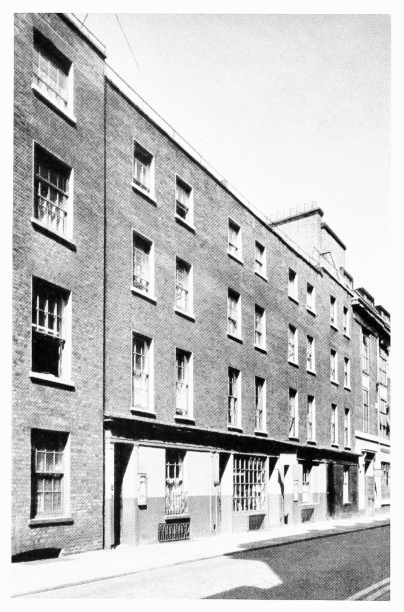Survey of London: Volumes 31 and 32, St James Westminster, Part 2. Originally published by London County Council, London, 1963.
This free content was digitised by double rekeying. All rights reserved.
'Plate 136: Houses erected in the 1820s on the SITE OF CARNABY MARKET', in Survey of London: Volumes 31 and 32, St James Westminster, Part 2, ed. F H W Sheppard (London, 1963), British History Online https://prod.british-history.ac.uk/survey-london/vols31-2/pt2/plate-136 [accessed 16 April 2025].
'Plate 136: Houses erected in the 1820s on the SITE OF CARNABY MARKET', in Survey of London: Volumes 31 and 32, St James Westminster, Part 2. Edited by F H W Sheppard (London, 1963), British History Online, accessed April 16, 2025, https://prod.british-history.ac.uk/survey-london/vols31-2/pt2/plate-136.
"Plate 136: Houses erected in the 1820s on the SITE OF CARNABY MARKET". Survey of London: Volumes 31 and 32, St James Westminster, Part 2. Ed. F H W Sheppard (London, 1963), British History Online. Web. 16 April 2025. https://prod.british-history.ac.uk/survey-london/vols31-2/pt2/plate-136.
In this section
b, c. Houses erected in 1820's on site of Carnaby Market (pp. 198, 202)
a. Proposal for widening Shugg Lane (now Glasshouse Street) at intersection with Piccadilly, 1796 (p. 67)

Proposal for widening Shugg Lane (now Glasshouse Street) at intersection with Piccadilly, 1796 (p. 67)
b. Nos. 36–33 (consec.) Marshall Street in 1962

Nos. 36–33 (consec.) Marshall Street in 1962
c. Nos. 10–1 (consec.) Newburgh Street in 1960

Nos. 10–1 (consec.) Newburgh Street in 1960